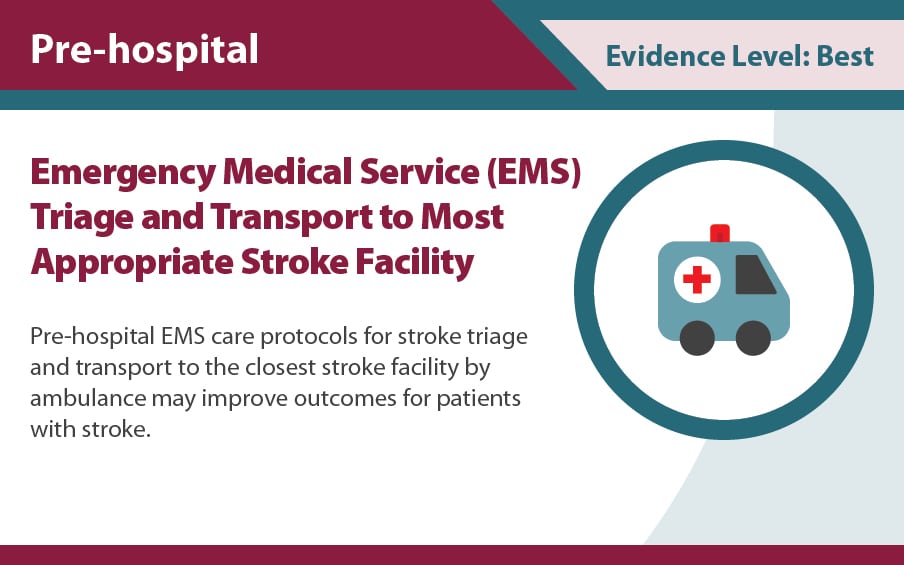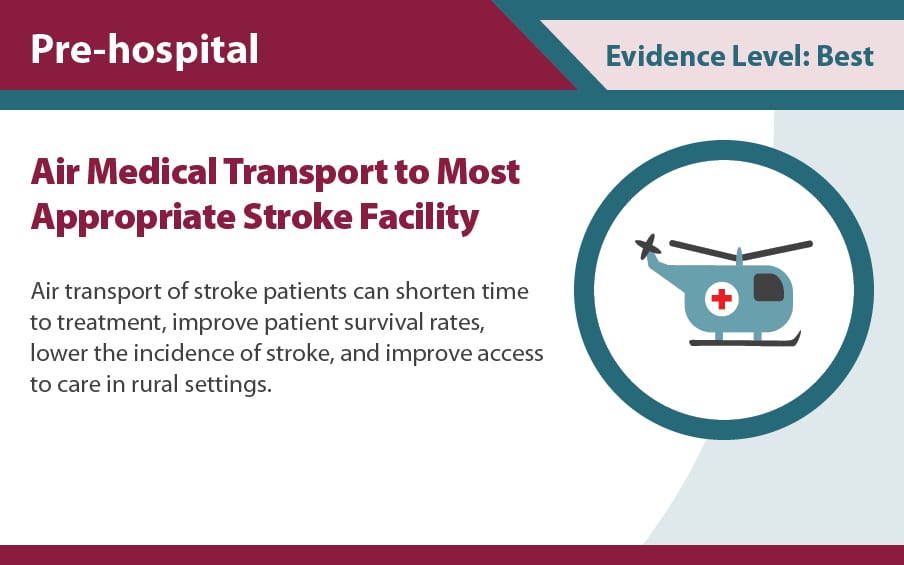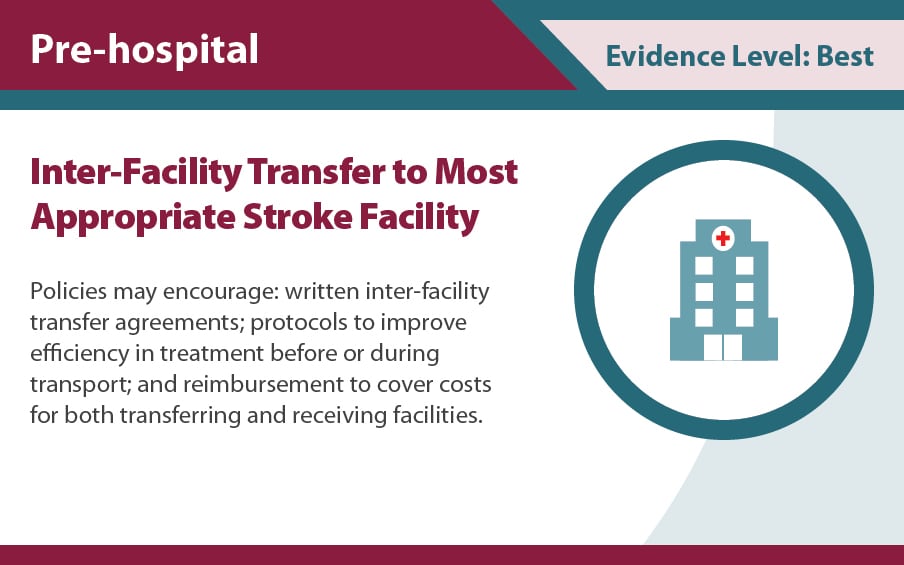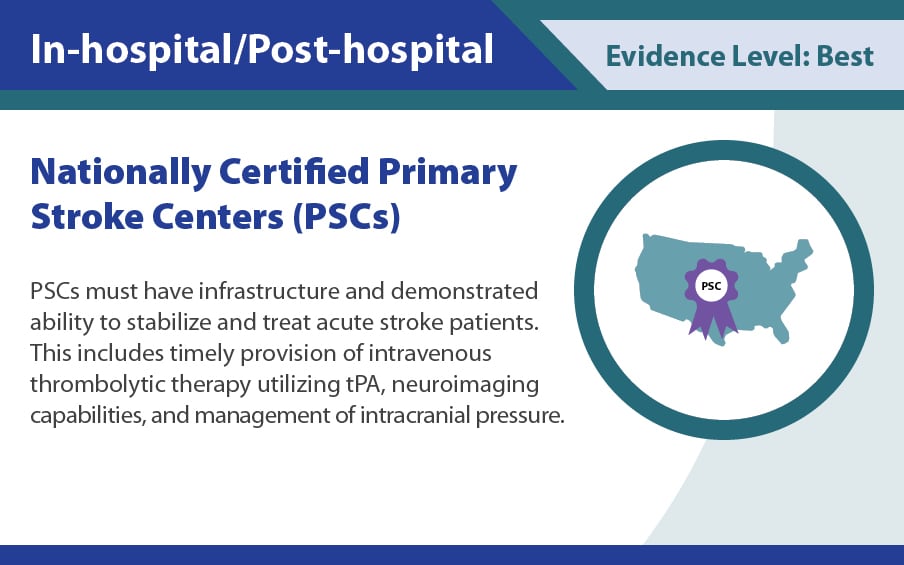At a glance
Policy evidence assessment reports prioritize stroke policy interventions by these evidence levels: best, promising, or emerging.
Background
Stroke is a leading cause of death and serious disability in the United States.1 There are life-saving treatments for stroke, but patients must receive them in a timely manner.
State and regional stroke systems of care coordinate and promote timely patient access to the full range of activities and services associated with stroke prevention, treatment, and rehabilitation.2 Stroke systems of care improve patient care and support throughout the patient's health care journey—from the first symptoms of stroke, emergency medical services (EMS) transport and hospital care, to follow-up with outpatient providers.








About the reports
In May 2017, the Centers for Disease Control and Prevention, Division for Heart Disease and Stroke Prevention (DHDSP) assessed the best available evidence for 7 policy interventions to improve pre-hospital stroke care; these interventions were addressed in state law. Pre-hospital stroke care includes all emergency medical care provided to the stroke patient before the handoff of the patient from EMS providers to staff at the acute care facility.
Between May and August 2018, DHDSP assessed the best available evidence for 9 additional policy interventions to improve in-hospital and post-hospital acute stroke care. In-hospital care includes all care provided to the stroke patient at an acute care facility before a patient is discharged. Post-hospital acute stroke care includes all long-term rehabilitative care received by the patient after discharge.
The reports prioritize the stroke policy interventions by these evidence levels: best, promising quality and impact, or emerging.
- State laws that address the policy interventions with best evidence are expected to have the greatest potential for a positive health impact and an associated economic impact. Examples of positive health outcomes include improved patient access to appropriate stroke treatment and improved neurological outcomes and mortality rates. Economic impacts may include such factors as shorter hospital stays, cost savings, and cost-effectiveness.
- Those with promising or emerging evidence could also have positive impacts, but the quantity and quality of the evidence for public health impact is limited at this time.
Each report provides evidence summaries for the stroke policy interventions included in the assessment. These include a reference list, positive outcomes observed in intervention studies, and the states in which these outcomes were studied. These summaries are designed to help decision makers and public health organizations determine which policy interventions may be useful in their state.
Using the reports
Results of these policy evidence assessments offer decision makers real-world, evidence-informed options for supporting stroke systems of care.
- State decision makers and public health organizations may consider presenting the reports to stroke task forces and collaboratives, state and local public health agencies, EMS directors, health care providers and payers, and others interested in improving stroke outcomes. These reports can be used with fact sheets about stroke rates and existing stroke policies and programs.
- State and private sector decision makers may refer to the reports to plan policy interventions to improve stroke care.
- State and local health agencies and their partners, state legislators, and task forces can use these reports to help drive stroke policy development.
- Researchers may review these reports to consider evidence gaps to be addressed in future studies.
Disclaimer: The findings and conclusions of these reports are those of the authors and do not necessarily represent the official position of the Centers for Disease Control and Prevention. Furthermore, these reports are not intended to promote any particular legislative, regulatory, or other action.
- Centers for Disease Control and Prevention. Stroke facts. Accessed December 3, 2023.
- Schwamm LH, Pancioli A, Acker JE, et al. Recommendations for the Establishment of Stroke Systems of Care. Recommendations From the American Stroke Association's Task Force on the Development of Stroke Systems. 2005;36(3):690–703.
